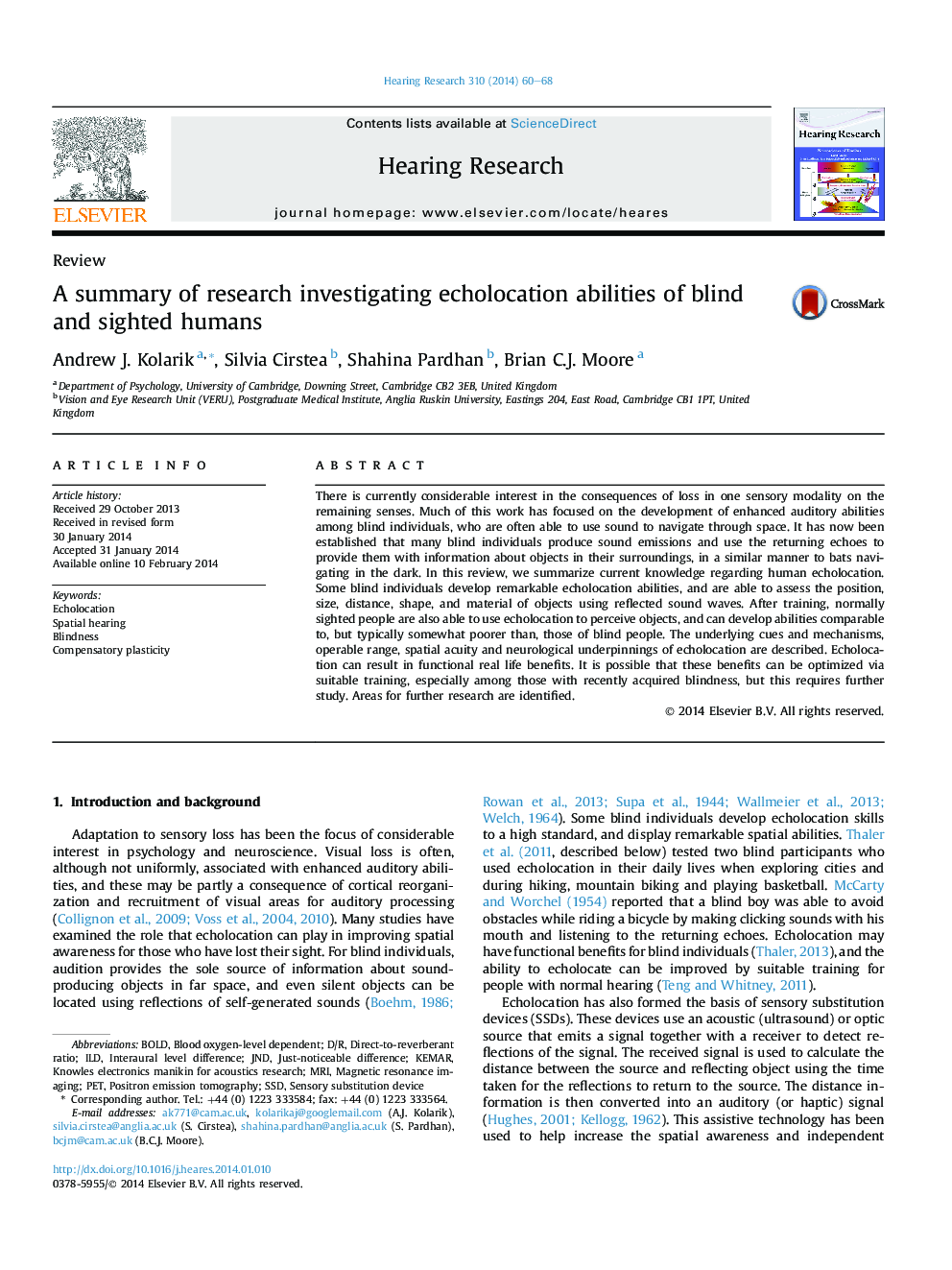| کد مقاله | کد نشریه | سال انتشار | مقاله انگلیسی | نسخه تمام متن |
|---|---|---|---|---|
| 4355136 | 1615590 | 2014 | 9 صفحه PDF | دانلود رایگان |
• Blind and sighted individuals can perceive objects using echolocation.
• Cues include level, spectral envelope, emission-echo delay, and binaural differences.
• On average, the blind are better echolocators than the sighted.
• Visual brain areas of the blind are recruited for processing echolocation information.
There is currently considerable interest in the consequences of loss in one sensory modality on the remaining senses. Much of this work has focused on the development of enhanced auditory abilities among blind individuals, who are often able to use sound to navigate through space. It has now been established that many blind individuals produce sound emissions and use the returning echoes to provide them with information about objects in their surroundings, in a similar manner to bats navigating in the dark. In this review, we summarize current knowledge regarding human echolocation. Some blind individuals develop remarkable echolocation abilities, and are able to assess the position, size, distance, shape, and material of objects using reflected sound waves. After training, normally sighted people are also able to use echolocation to perceive objects, and can develop abilities comparable to, but typically somewhat poorer than, those of blind people. The underlying cues and mechanisms, operable range, spatial acuity and neurological underpinnings of echolocation are described. Echolocation can result in functional real life benefits. It is possible that these benefits can be optimized via suitable training, especially among those with recently acquired blindness, but this requires further study. Areas for further research are identified.
Journal: Hearing Research - Volume 310, April 2014, Pages 60–68
